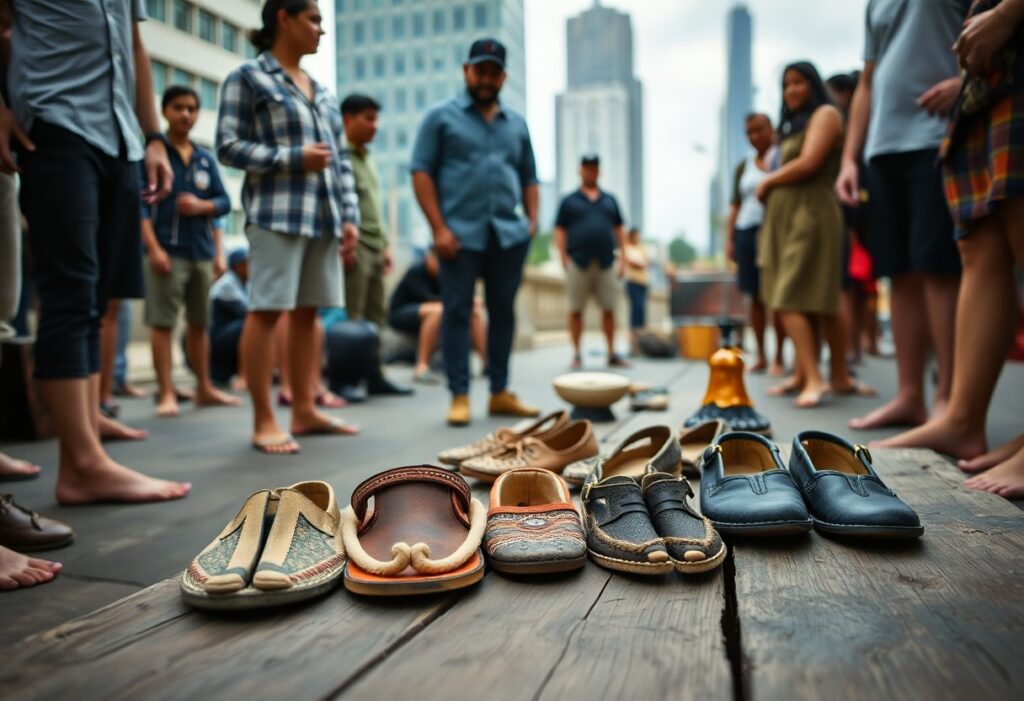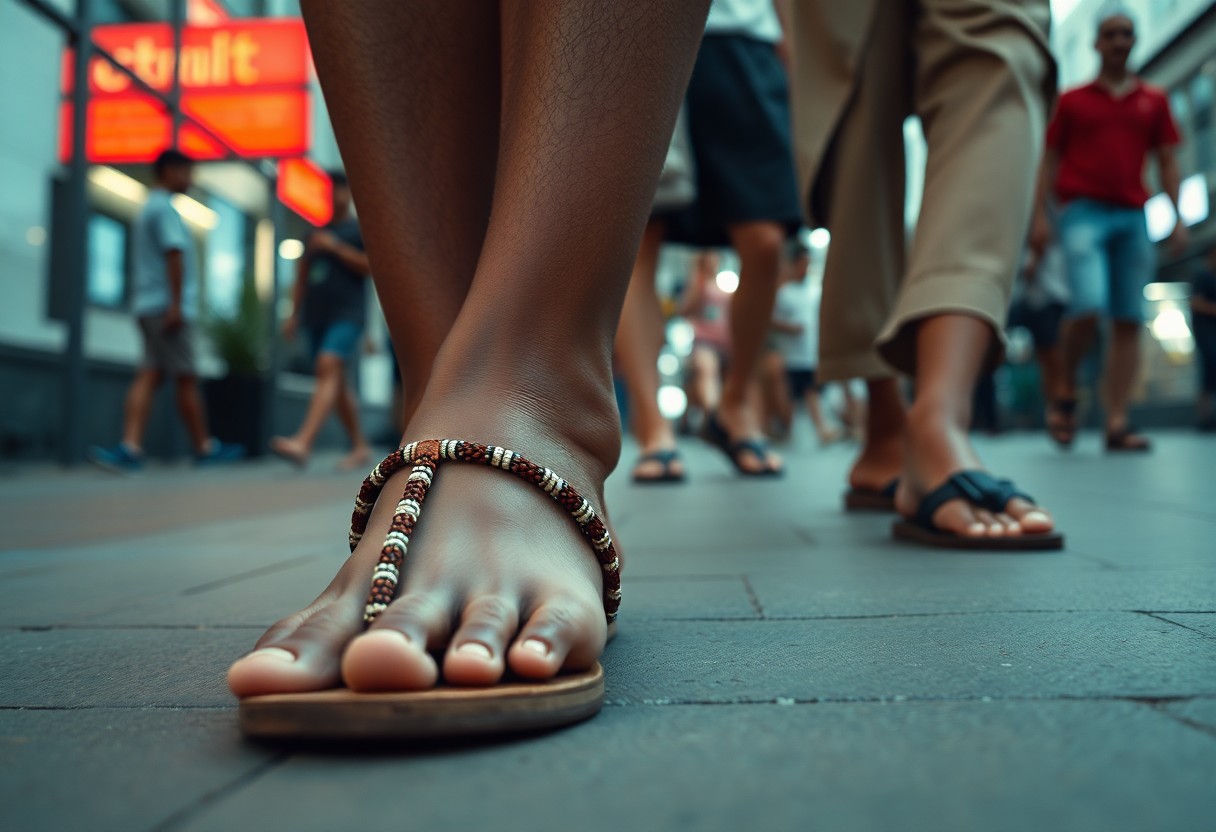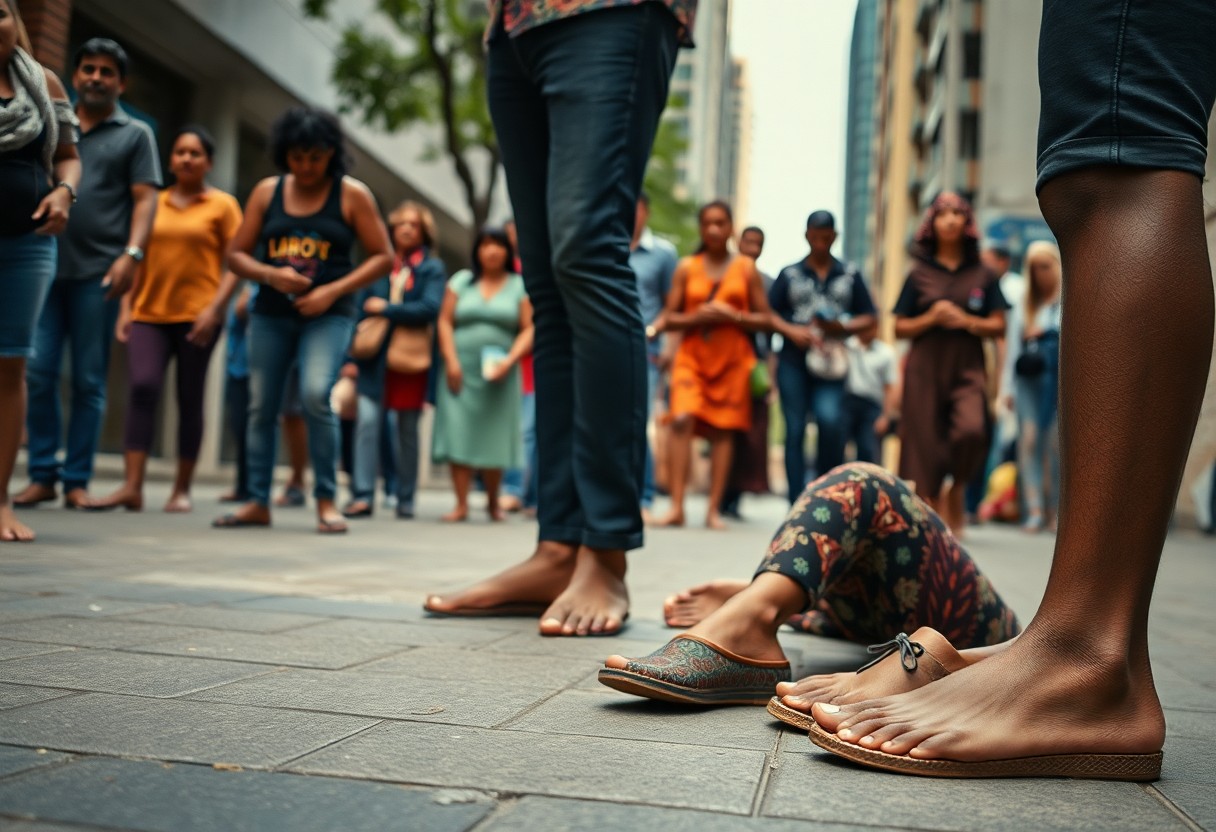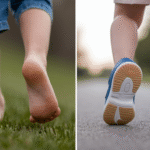
Delving into the realm of barefoot footwear through the insightful perspective of cultural anthropology reveals captivating stories that link the deep-rooted traditions of Aboriginal cultures to the contemporary urban environment. This exploration invites you to discover how cultural beliefs and practices associated with minimalist footwear influence our perceptions of comfort, our relationship with the earth, and our means of personal expression. By understanding these themes, you not only broaden your knowledge but also inspire a reconsideration of how your choice of footwear can reflect significant cultural meanings and your own identity.

Discover the Connection Between Ancient Footwear Practices and Modern Innovations
The current landscape of the footwear industry is a vibrant tapestry that intricately weaves together ancient traditions with cutting-edge innovations, fostering a growing appreciation for barefoot footwear. This journey not only honors traditional indigenous techniques but also adapts these practices to complement your modern lifestyle. Recognizing the significance of historical methods allows you to uncover an exciting blend of cultural respect and practical aesthetics in your everyday footwear selections, enriching your personal style while paying homage to the past.
Analyzing Indigenous Foot Conditioning Techniques Versus Modern Methods
Across various indigenous cultures, specific conditioning techniques have been employed to strengthen feet for traversing diverse terrains. Methods such as walking barefoot on different surfaces have effectively enhanced the arches and muscles in ways that many contemporary interpretations often overlook. While you may find minimalist footwear designed to replicate these benefits, they frequently fall short of providing the authentic experience gained through true contact with the earth, which is vital for cultivating natural foot strength and flexibility.
Tracing the Evolution of Military Footwear: From Ancient Caligae to Contemporary Tactical Boots
The intricate history of military footwear unfolds as a fascinating tale of adaptation and innovation, transitioning from the resilient Roman caligae, designed for strength and traction, to today’s tactical boots that blend protection with agility and comfort. An examination of these developments reveals a consistent principle: in challenging environments, functionality takes precedence, necessitating gear that enhances endurance and mobility for soldiers.
The Roman caligae exemplified a sophisticated response to military requirements, crafted from durable leather with an open-toe design for ventilation. This ancient footwear featured thick soles that effectively absorbed shock and provided essential traction, crucial for combat situations. Fast forward to the present day, and tactical boots now incorporate advanced materials like Kevlar and waterproof membranes, elevating durability and performance. These modern designs also include padded collars and state-of-the-art cushioning systems to reduce injuries during demanding military operations. By appreciating the legacy of military footwear, you can clearly see how these historical designs have paved the way for contemporary innovations, merging heritage, practicality, and cutting-edge technology to satisfy today’s warriors’ needs.

Examining the Disparities in Footwear Choices Between Urban and Rural Areas
The variations in footwear preferences between urban and rural settings highlight profound cultural and practical differences. Urban environments often prioritize style and brand identity, while rural areas typically emphasize functionality and durability. As barefoot footwear gains traction, urban dwellers increasingly adopt its minimalist design as both a fashion statement and a pathway to perceived health benefits. Conversely, individuals in rural regions may remain hesitant, influenced by traditional norms and the practical demands of their surroundings.
Identifying Emerging Trends in the Urban Adoption of Barefoot Footwear
In metropolitan areas, a noticeable trend towards the acceptance of barefoot footwear is taking shape, with adoption rates steadily rising over the past decade. This movement is fueled by various factors, including heightened awareness of health, a growing interest in natural movement, and the impact of fitness trends such as yoga and running. Surveys indicate that approximately 35% of urban residents have actively sought out barefoot-style shoes, showcasing a cultural shift toward embracing innovative body mechanics.
Investigating Gender-Based Barriers to Adoption: Who is Leading the Trend?
Gender dynamics play a significant role in the acceptance of barefoot footwear, with different motivations impacting the choices of men and women. Women often face greater societal pressures regarding fashion and aesthetics, which may impede their willingness to adopt minimalist styles. In contrast, men might be more motivated by the performance and health benefits associated with these shoes, leading to higher adoption rates within male demographics.
A deeper exploration of the gendered aspects of barefoot footwear adoption reveals that societal expectations profoundly influence women’s decisions. Women frequently navigate a landscape where ideals of beauty and fashion overshadow practical health advantages. For instance, research indicates that approximately 45% of men in urban areas are inclined towards barefoot shoes, compared to only 30% of women. Female consumers often grapple with the balance between aesthetics and functionality, making them more cautious in evaluating the visual appeal of barefoot footwear against their needs for comfort and support. By empowering women through targeted awareness campaigns and showcasing stylish barefoot options, there is potential to increase acceptance of this trend, ultimately reshaping urban footwear narratives and promoting inclusivity across genders.

Groundbreaking Innovations Shaping the Future of Barefoot Footwear
As the demand for barefoot footwear continues to escalate, revolutionary technologies are set to redefine your experience regarding comfort and performance. Advances in materials science and personalized fitting techniques will not only enhance functionality but also tailor your walking experience, harmonizing traditional wisdom with modern design principles. We are entering a phase where your footwear can be as distinctive as the journey it accompanies, ultimately leading to improved comfort and performance.
The Role of 3D Scanning Technology in Achieving the Perfect Fit
The emergence of 3D scanning technology is transforming the customization process for barefoot footwear, allowing for a precise fit that molds to your unique foot shape. Instead of settling for generic sizes, your shoes can be meticulously crafted to align with the contours of your feet, significantly enhancing comfort and reducing the risk of injury. Custom-fit alternatives will not only elevate your walking experience but also broaden access to barefoot shoes for individuals with varying foot shapes and sizes.
Incorporating Smart Sensors: The Next Frontier in Footwear Technology
The integration of smart sensors into barefoot footwear is poised to revolutionize the industry by embedding technology directly into the soles. These innovative features can track various metrics, from distance traveled to foot pressure, providing you with valuable insights to optimize your walking or running practices. With real-time data available, you can adjust your activities to boost performance and ensure safety.
Imagine accessing real-time analytics as you walk or run. Smart sensors can monitor your gait, alerting you to any irregularities that may lead to injury. Some forward-thinking brands are already developing footwear capable of analyzing your foot’s impact on different surfaces, offering personalized style or cushioning recommendations on the move. This progressive integration merges smart technology with the traditional barefoot philosophy, ensuring that you maintain a natural stride while harnessing the latest advancements in wearable tech. The potential for enhancing sports performance, rehabilitation, and everyday comfort is limitless, fundamentally changing how you interact with your environment with each step.
Reflecting on the Evolution of Barefoot Footwear
Your inquiry into the cultural anthropology surrounding barefoot footwear reveals a rich narrative intricately woven from the threads of Aboriginal traditions to present-day urban practices. By adopting the principles of natural movement and a connection to the earth, you gain profound insights into how this footwear philosophy transcends mere fashion, significantly shaping lifestyle choices and community values. As you contemplate these varied perspectives, consider how your footwear choices can embody and foster a deeper understanding of cultural heritage and adaptability in today’s evolving landscape.
The Article Cultural Anthropology of Barefoot Footwear: From Aboriginal Traditions to Modern Urban Adoption appeared first on My Shoes Finder
The Article Cultural Anthropology of Barefoot Footwear: Traditions to Today Was Found On https://limitsofstrategy.com











No responses yet